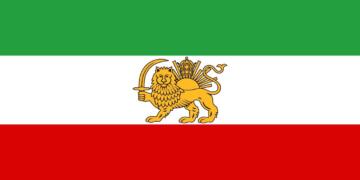What is Akashvani?
All India Radio (AIR), formerly known as Akashvani (literally “Voice from the Sky”) since 1957, is India’s national public radio broadcaster and a division of Prasar Bharati. It was founded in 1936.
Known as the sister of Doordarshan
It is the sister service of Doordarshan, an Indian television broadcaster owned by Prasar Bharati. The Drama Section, the FM Section, the National Service, and the Indian television station Doordarshan Kendra are all housed in the Akashvani Bhavan building in New Delhi (Delhi).
All India Radio is the world’s largest radio network, as well as one of the world’s largest broadcasting organizations in terms of the number of languages broadcast and the socioeconomic and cultural diversity it serves.
AIR’s home service consists of 420 stations spread across the country, covering nearly 92% of the land area and 99.19% of the population. AIR creates content in 23 languages and 179 dialects.
“Akashvani” Word Origin
Akashvani is a Sanskrit word that means “celestial announcement” or “voice from the sky/heaven.” Akashwani is frequently featured in stories in Hinduism, Jainism, and Buddhism as a medium of communication from heaven to mankind.
Rabindranath Tagore renamed the Indian State Broadcasting Service (ISBS) All India Radio in a poem written for the inauguration of Calcutta’s shortwave service as Akashvani, the voice that comes over from the skies.
- V. Gopalaswami used the term ‘Akashvani’ in the context of radio in 1936, after establishing India’s first private radio station in his residence, “Vittal Vihar” (about two hundred yards from AIR’s current Mysore radio station
Akashvani was later used as the on-air name of All India Radio in 1957; given its literal meaning in Sanskrit.
History of Akashvani
During the British Raj, broadcasting began in June 1923 with programs by the Bombay Presidency Radio Club and other radio clubs.
On July 23, 1927, the private Indian Broadcasting Company Ltd (IBC) was authorized to operate two radio stations: the Bombay station, which began on July 23, 1927, and the Calcutta station, which began on August 26, 1927.
On March 1, 1930, the company declared bankruptcy. On 1 April 1930, the government took over the broadcasting facilities and launched the Indian State Broadcasting Service (ISBS) on an experimental basis for two years, then permanently in May 1932, before becoming All India Radio on 8 June 1936.
Also Read: Doordarshan is launching an antidote to Nehru’s ill researched ‘Bharat ek Khoj’
Growing All-out
All India Radio hired its first female employee in August 1947.
All India Radio hired its first female newsreader, Saeeda Bano, in August 1947, who read the news in Urdu.
The External Service debuted on October 1, 1939, with a Pashto broadcast. It was intended to counter German radio propaganda aimed at Afghanistan, Persia, and Arab countries.
In 1939, Eastern India’s Dhaka station, in what is now Bangladesh, opened.
This station catered to and nurtured Bengali intellectual pioneers. Natyaguru Nurul Momen, the most prominent of them, pioneered the talk-show format in 1939. In 1942, he wrote and directed the first modern radio play for this station.
When India became independent in 1947, the AIR network had only six stations (Delhi, Mumbai, Kolkata, Chennai, Lucknow, and Tiruchirappalli) (Delhi, Mumbai, Kolkata, Chennai, Lucknow, and Tiruchirappalli).
Follow us on twitter for more news and daily updates: @tfipost

































